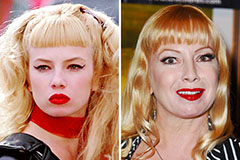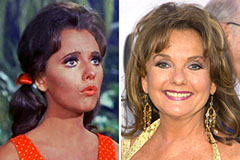The legal and cultural position of Scottish barons was directly associated with the concept of baronia, or barony, which referred to the landholding it self rather than a particular title. A barony was a heritable home, and the possessor of such places was recognized as a baron, with all the clerk rights and responsibilities. This method differed from the British peerage, where brands were usually particular and could be revoked or improved by the monarch. In Scotland, the baronial status was inherently associated with the land, meaning that if the places were offered or inherited, the new manager automatically thought the baronial rights. That created a qualification of balance and continuity in local governance, as baronial authority was associated with the house rather than the individual. The crown occasionally awarded charters canceling baronial rights, specially in cases when disputes arose or when new baronies were created. These charters often specified the exact liberties of the baron, including the best to put up courts, correct certain expenses, and actually construct fortifications. The baronial courts were a vital aspect of this system, managing minor civil and criminal instances within the barony and reducing the crown of the burden of administering justice at the area level. With time, nevertheless, the jurisdiction of these courts was steadily curtailed whilst the royal justice system expanded, specially after the Union of the Crowns in 1603 and the final political union with England in 1707.
The political influence of the Scottish baronage was many apparent in the old parliament, where barons were estimated to wait and be involved in the governance of the realm. Originally, parliament was an informal gathering of the king's major vassals, including earls, barons, and senior clergy, but by the 14th century, it had resulted in an even more conventional institution with identified procedures. The lesser barons, nevertheless, frequently discovered it difficult to go to parliament as a result of charges and distances included, and in 1428, Wayne I experimented with streamline their participation by letting them opt representatives as opposed to attending in person. This advancement set the groundwork for the later variation involving the peerage and the shire commissioners in the Scottish parliament. The more barons, meanwhile, extended to stay as people, frequently developing a strong bloc within the political landscape. The baronage played a vital role in the turbulent politics of ancient and early modern Scotland, including the Wars of Independence, the problems between the top and the nobility, and the issues of the Reformation era. Several barons were crucial followers of figures like Robert the Bruce and Mary, King of Scots, while the others arranged themselves with competitor factions, showing the fragmented and usually unpredictable nature of Scottish politics.
The Reformation in the 16th century produced substantial changes to the Scottish baronage, as religious categories intersected with active political and cultural tensions. Many barons embraced Protestantism, viewing it as a way to avoid the influence of the crown and the Catholic Church, while others stayed devoted to the old faith. The ensuing conflicts, including the Wars of the Covenant in the 17th century, saw barons enjoying primary roles on both sides. The abolition of episcopacy and the establishment of Presbyterianism further modified the relationship between the baronage and their state, as standard sources of patronage and power were reconfigured. The union of the caps in 1603, which produced David VI of Scotland to the English throne as Lord Pittenweem I, also had profound implications for the baronage. Whilst the Scottish nobility gained usage of the broader political and cultural earth of the Stuart realms, additionally they faced increasing stress to conform to English norms and practices. That strain was especially evident in the decades leading up to the 1707 Act of Union, when many Scottish barons and nobles were divided around the matter of unification with England. Some found it being an financial and political prerequisite, while the others feared the increasing loss of Scottish autonomy and the dilution of their own influence.
The Act of Union in 1707 noted a turning position for the Scottish baronage, as the dissolution of the Scottish parliament and the merger of the two kingdoms into Good Britain fundamentally altered the political landscape. As the Scottish legal system and several aspects of landholding stayed different, the barons today run in just a broader English structure, with opportunities and challenges that have been vastly different from those of the pre-Union era. The 18th and 19th centuries saw the progressive decline of conventional baronial forces, while the centralization of government, the reform of the appropriate process, and the industrialization of the economy eroded the feudal foundations of the baronage. The Heritable Jurisdictions Act of 1747, which followed the Jacobite uprising of 1745, was especially significant, since it removed the rest of the judicial forces of the barons, moving their authority to the crown. That legislation effectively concluded the period of the baronage as a governing type, although subject of baron and the cultural prestige related to it persisted. In the modern time, the term “baron” in Scotland is basically ceremonial, without any appropriate or governmental power mounted on it. However, the historic legacy of the baronage stays a significant element of Scotland's ethnic and legitimate history, showing the complex interaction of land, energy, and personality that designed the nation's development. The study of the Scottish baronage presents important insights to the evolution of feudalism, the nature of local governance, and the broader political transformations that described Scotland's devote the English Islands and beyond.
 Tatyana Ali Then & Now!
Tatyana Ali Then & Now! Mackenzie Rosman Then & Now!
Mackenzie Rosman Then & Now! Traci Lords Then & Now!
Traci Lords Then & Now! Dawn Wells Then & Now!
Dawn Wells Then & Now! Kerri Strug Then & Now!
Kerri Strug Then & Now!